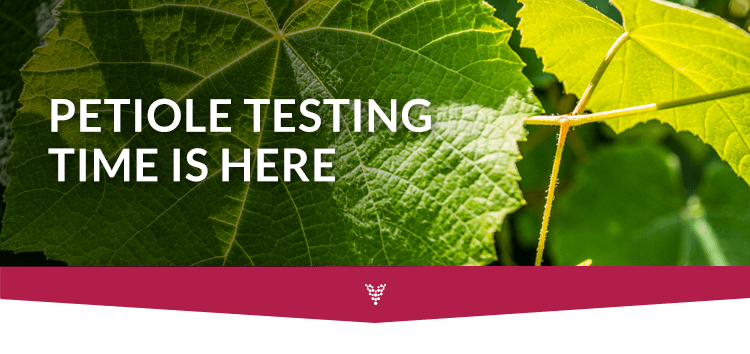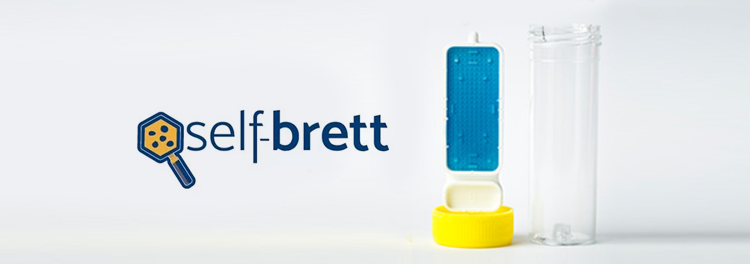Petioles & Self-brett Offer
Independent Petiole Testing

Petiole testing can provide a snapshot of the nutrient status of the vine. Obtaining quantitative information on nutrient levels can assist in determining the effectiveness of fertiliser applications and also help you to identify the cause of any specific vine problems.
The best time of year to collect grape vine Petioles for analysis is fast approaching (full flowering, 80% cap-fall).
Our Petiole Testing Bundle includes analysis of the following nutrients:
Boron, Calcium, Chloride, Copper, Iron, Magnesium, Manganese, Nitrate, Nitrogen, Phosphorous, Potassium, Sodium and Zinc and now includes Aluminium and Sulphur*.
The cost of this analysis is $75 per sample (+GST), with discounts for bulk samples. And unlike other laboratories, we don’t charge any additional preparation, batch or reporting fees.
We can also provide a table of guidelines that will tell you whether the levels of these nutrients in your vines are deficient, adequate or toxic.
Contact us for your free Petiole EasyTest Sample Pack for Grapevine Petioles, which includes sample bags with labels, gloves, Reply Paid postage sticker and detailed sampling instructions.
* At no extra cost
For our Factsheet on Petiole analysis, please click here.

Using clean hands and the gloves provided, tear off a petiole (leaf stalk) of a basal leaf opposite a flowering cluster. Collect 100 petioles from throughout the planting. Sample from vines in a zigzag pattern to obtain a representative sample. Do not use metallic items such as snips to cut petioles as trace metal contamination can occur.
Miss the first three vines in each row if there is an access road adjacent. Avoid sampling vines growing within areas with unusual features, such as rocky areas, poor drainage, near fences, trees, water troughs or fertilizer depots to minimise the risk of contaminated or skewed results. Avoid soiled, diseased or damaged plants. Do not sample petioles touching trellis wires, or plants that are under water or temperature stress.
Preferably sample in the cool of the morning, before any moisture stress may occur. Maintain samples in a cool environment prior to and during transportation. Do not seal samples in plastic bags or on unprotected ice – place them directly into the bags provided.
Samples should be dispatched to the nearest Vintessential laboratory as soon as possible.
Check your permit!
When sending samples, please ensure that transfer of the samples complies with quarantine regulations. A permit may be required for samples sent from outside of a Phylloxera Exclusion Zone (PEZ).
* At no extra cost
For our Factsheet on Petiole analysis, please click here.

Self-Brett is an innovative new device that makes testing Brettanomyces in your winery simple and easy.
For a short period only, Buy One Get One Free!
For every Self-brett you order you will receive two. Hurry – offer is limited.
Self-brett is based on a patented selective growth media that is specific to Brettanomyces species, incorporated into a very simple-to-use device.
The benefits of Self-Brett are:
- Simple to use
- No other lab equipment needed
- Positive Brett detection by both smell and visual colony growth
- No laboratory skills required
- Semi-quantitative determination
- To use: open the tube, pour in wine, drain, re-seal and leave
Developed in Italy by Dr. Simona Campolongo of Grape SRL and now used around the world and brought to Australia exclusively by Vintessential Laboratories.
“When I met Simona at Simei in Milan in late 2019, I saw straight away that this device fills a real gap for wineries to use an easy and low-cost method of Brett detection. With the backup support of our labs to do more quantitative testing if needed, this is a ground-breaking way for winemakers to manage Brettanomyces” Greg Howell, Managing Director of Vintessential.

